Mastitis in cows is the most economically significant disease in the dairy industry. Mastitis is the inflammation of udder and milk parenchyma, hardening of the udder, decreased milk production, and changes in the milk both physically and increase the somatic cell count in milk. Mastitis causes the loss of dairy farms in multiple ways, like loss of milk production, deterioration of the milk quality, increased treatment cost, the blindness of milk teats, premature culling of productive dairy cattle, and reduced reproductive performance the dairy farm.
Bovine mastitis is the most talked disease of dairy farms. The disease is distributed throughout the world, including the United States of America, European countries, Africa, Asia, North America, and Australia. The disease can be treated with antibiotics and supportive measures. The mastitis can be prevented by taking adequate measures like maintaining udder hygiene, sanitation of the cow barn, clean food and water supplement, and maintaining a milking schedule.
Economic Importance of Bovine Mastitis
There are different types of economic losses of mastitis of a dairy farm. It is suggested the total economic losses caused by mastitis are composed of the following items:
- Milk production loss or reduced milk production.
- Milk discarded or downgraded or decrease the sale value.
- Cows lost by premature culling.
- Treatment and veterinary expenses.
- Reduced breeding performance.
What is Mastitis in Cows?
Inflammation of the mammary gland or udder is called mastitis. The term “Mastitis” is derived from the Greek word ‘Mastos’ for breast and ‘itis’ for inflammation. The disease is recognized by physical, chemical, and bacteriological changes in the milk and pathological changes in the glandular tissue. It is a primary endemic disease of dairy cattle, and milk-secreting tissues and ducts of the udder may be damaged, or sometimes permanent damage can occur.
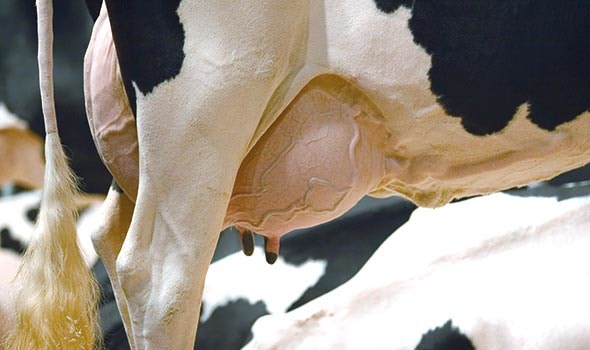
Causes of Mastitis in Cows
Although many infective agents like bacteria, mycoplasma, and fungus have been implicated as causes of mastitis, the only significant causes of mastitis are bacteria. Pathogens of the bovine udder are usually categorized as major pathogens and minor pathogens.
- Major pathogens are- Streptococcus agalactiae, Streptococcus aureus, Mycoplasma spp, Streptococcus uberis, Streptococcus dysagalactiae, and Escherichia coli.
- Minor pathogens are- Corynebacterium bovis and Staphylococcus epidermidis.
- Other minor bacterial pathogens are- Campylobacter jejuni, Enterobacter aerogans, Mycobacterium bovis, Bacillus cereus, Pasteurella multocida, P haemolytica, Pseudomonas pyocyaneus, Klebsiella spp, Leptospira interrogans, and Nocardia asteroids.
- Mycoplasmal infection– Mycoplasma bovis, M Canadensis, M bovigenitalium, and M alkalescent.
- Fungal infection– Trichosporon spp, Aspergillus fumigatus, Candida albicans, Cryptococcus neoformans.
- Algal infection- Prototheca trispora and Prototheca zopfii.
Types of Mastitis in Cattle
There are different types of bovine mastitis that are classified according to three different criteria. The criteria are clinical symptoms and mode of transmission and the causal agents.
- Based on clinical symptoms, mastitis in cattle are six types:
- Clinical Mastitis. The mastitis of a cow that produces the clinical signs like redness, swelling, hot, and painful udder changes the color and odor of milk, reduced milk production, and hardening of the udder.
- Sub-clinical Mastitis. The mastitis does not produce the clinical signs, but changes in the milk like increase the somatic cell count in the milk.
- Peracute Mastitis.The sudden onset of fever from 107-108 F, severe toxemia due to Streptococcus agalactia, recumbency, and death due to bacteremia and toxemia.
- Acute Mastitis. The bovine mastitis is the sudden onset of clinical signs with fever, inflammation of the udder, decreased milk production, and physical changes of milk quality.
- Sub-acute Mastitis. The mastitis does not produce systemic signs like fever, toxemia, and bacteremia but causes changes in the udder and milk.
- Chronic Mastitis. The bovine mastitis does not produce clinical or systemic signs. Still, there is an organism in the udder, which increases the somatic cell count and chances of re-infection.
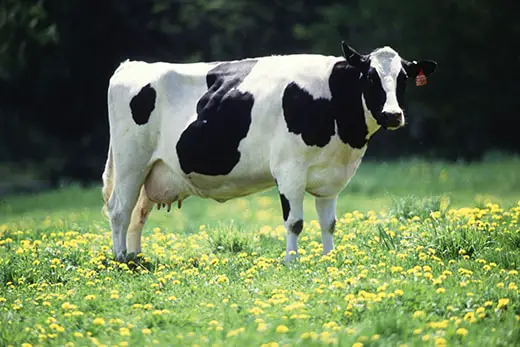
- Mode of transmission may be one of the criteria for the different types of mastitis in cows.
- Environmental Mastitis. The organism responsible for mastitis in cows transmits from the environment like a cow barn, feed, grass, contaminated utensils.
- Contagious Mastitis. The organism transmits from other animals by direct or indirect contact known as contagious mastitis.
Mode of Transmission of Bovine Mastitis
Mastitis is distributed worldwide. High incidence has been recorded during the third lactation in cows and fourth lactation in buffalo cows, and high risk during the first two months of lactation. The disease is transmitted by infected udder, environmental contamination, injured teat, vigorous sucking, defective, or faulty milking machine. Other transmissions by the contact of the milking machine and milker’s hands by milking from infected quarters.
What are the Symptoms of Mastitis in Cattle?
The most important clinical findings of mastitis in the early stages in the appearance and consistency of the milk and swelling, heat, and edema of the affected quarters. It is necessary to grade mastitis clinically for the appropriate selection of therapy.
- Subacute (grade 1) with an only mild change in either the milk or the udder.
- Acute (grade 2) with gross changes in the milk and udder. The udder will be grossly enlarged and may be hot and painful, and the milk will have large clots or b purulent. Your cow is likely to have a body temperature of more than 2 degrees F above average.
- Peracute (Grade 3) mastitis is similar to grade 2 mastitis but with additional systemic reaction.
- Chronic mastitis is the term applied to cases that remain infected for more than 100 days and have three or more quarter infections per lactation.
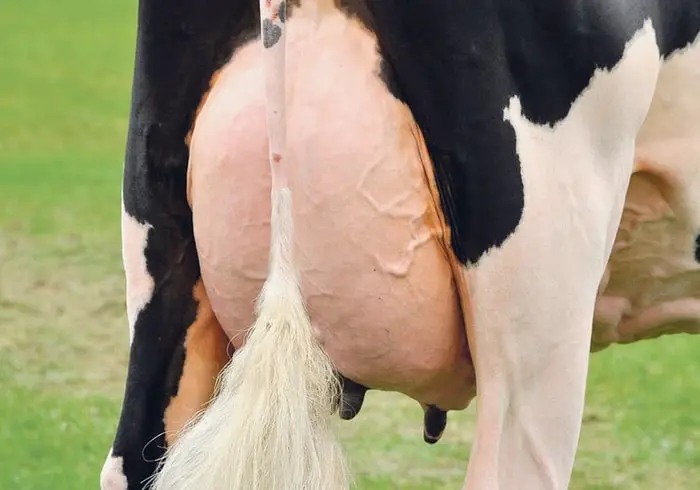
There are different types of signs of the disease you may see. The main signs of the mastitis are:
- Abnormalities of the udder such as swelling, hardness, heat, redness, and pain.
- Abnormalities of the udder secretion and the milk look watery appearance, flakes, pus, or clots.
- Increase in body temperature of the animal.
- Milk production is reduced.
- Lack of appetite.
- Movement problems due to swollen udder and pain.
- Sunken eye.
- Diarrhea and digestive disorders.
- Dehydration.
- Weight Loss.
- The blindness of one or more teats.
- In severe cases, the formation of pus in the udder and teats(pyogenic mastitis).
- Toxemia.
- Bacteremia.
- Death due to peracute mastitis.
Diagnosis of Mastitis in Cattle
Diagnosis of mastitis can be made on history and clinical findings. The clinical diagnosis of mastitis in the individual cow is usually made by the milker.
- The clinical findings in mastitis include abnormalities of secretion, abnormalities of the size, consistency, and temperature of the udder, and frequent systemic reaction.
- Palpation and inspection of the udder are directed at detecting fibrosis, inflammatory swelling, and the atrophy of the udder tissue.
- Mastitis is said to be subclinical when there is evidence of inflammation that is a high somatic count in the milk without any visible abnormality of the milk or udder.
- Bacterial mastitis becomes clinical when milk has a cell count greater than 5 lac cells/ml, and a causal agent can be isolated.
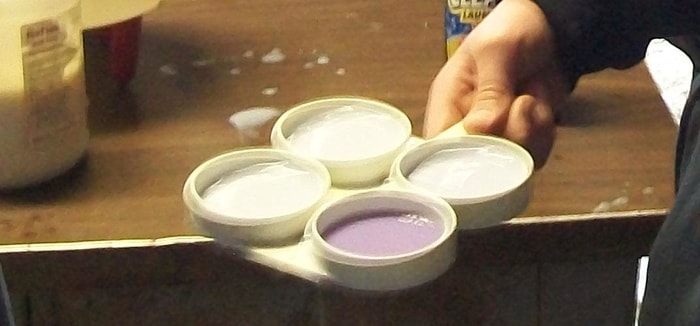
How do you Treat Mastitis in Cows?
Treatment strategies vary with the clinical severity of the disease. It is crucial to maintain the mastitis of your farm. Treatment strategies help to give you the treatment of your cattle. The strategies are:
- The subacute case (Grade I) requires only intramammary therapy for three days after each milking.
- The acutely affected cow (Grade II); you should be treated with systemic and intramammary antibiotics for a minimum of 3 days.
- The peracute cow (Grade III) needs to be treated with systemic and intramammary antibiotics, oral or intravenous fluids, and anti-inflammatory drugs.
Your vets will perform the successful treatment of your animal. The success of treatment depends on types of causal agents, stage of severity of infection, and proper selection and administration of drugs. Broad-spectrum antibiotics like ( amoxicillin, streptomycin, azithromycin, ceftriaxone) should be given in your animal. Antibiotics are administered both by injection or by the intra-mammary route: additive or supportive treatment needed for mastitis like corticosteroids (dexamethasone, prednisolone) injection to reduce inflammation.
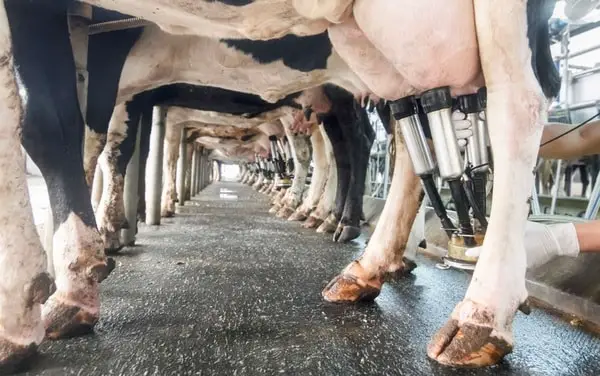
Oral administration of cobalt to enhance the antibiotic activity. Dextrose-saline 5% (not in high fever) to supply nutrients and eliminate toxins from your cattle’s body. Antihistaminic drugs should be given where extensive tissue damage and severe toxemia occur. Application of cold therapy- crushed ice in canvas bags, suspended around the udder, reduces the absorption of the toxin.
Management, Control, and Prevention of the Mastitis in Cows
Management, control, and prevention are essential for the mastitis of a dairy farm. Awareness of dairy farmers and control of the source and spread of the organisms should be needed.
- Early detection and starting treatment destroy the source of organisms.
- Maintain proper hygienic teat management and spread from cow to cow during milking.
- Separate the infected animals and cows that repeatedly contract mastitis.
- You may use effective sanitizer in the water and wash; and dry teats with clean towels.
- Dip the teat immediately after milking.
- Regular testing and maintenance of the milking machine and follow the excellent record keeping.
- Maintain a regular milking schedule on your farm.
Treatment Failure or Consequences of Bovine Mastitis
There are some causes that treatment does not respond. These reasons are-
- Improper diagnosis of the causes of mastitis.
- Wrong antibiotic selection.
- Re-infection due to inadequate hygiene and sanitation.
- Improper dose and incomplete administration of antibiotics and other drugs
- Wrong cow selection.
Effects on Milk Composition due To mastitis
The severity of the infection, secondary physiological changes that alter the metabolism of mammary cells of the cows may keep the effects of mastitis on milk composition. The epithelial cells are disrupted, or milk components are destroyed by enzymatic action. The disease can cause a decrease in potassium and an increase in lactoferrin. It also decreased the major protein in milk that is casein.
Final Advice on Mastitis in Cows
Mastitis is a widespread and economically important disease of dairy farms. The organisms responsible for the disease are mostly present in the environment, and infection occurs due to poor udder hygiene and lousy sanitation of the cow barn. As a good farm owner, you can control and prevent 90% of mastitis incidence on your farm by adequate preventive measures. The information I have provided in my article will help you take these preventive measures. I think this article will enhance your knowledge and give an economically viable and healthy dairy farm.